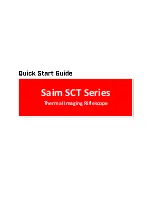
21
Magnification is calculated as follows:
Telescope Focal Length (mm)
= Magnification
Eyepiece Focal Length (mm)
The XX12g, for example, has a focal length of 1500mm. So,
the magnification with the supplied 28mm 2" eyepiece is:
1500mm
= 54x
28mm
The magnification provided by the 12.5mm illuminated eye-
piece is:
1500mm
= 120x
12.5mm
The maximum attainable magnification for a telescope is
directly related to how much light its optics can collect. A tele-
scope with more light-collecting area, or aperture, can yield
higher magnifications than a smaller-aperture telescope. The
maximum practical magnification for any telescope, regard-
less of optical design, is about 50x per inch of aperture. This
translates to about 600x for the XX12g. Of course, such high
magnification will only yield acceptable images if atmospheric
conditions are extremely favorable.
More typically, useful magnifications will be limited to 200x
or less, regardless of aperture. This is because the Earth’s
atmosphere distorts light as it passes through. On nights of
good “seeing,” the atmosphere will be still and will yield the
least amount of distortion. On nights of poor seeing, the atmo-
sphere will be turbulent, which means different densities of
air are rapidly mixing. This causes significant distortion of the
incoming light, which prevents sharp views at high magnifica-
tions.
Keep in mind that as magnification is increased, the bright-
ness of the object being viewed will decrease; this is an inher-
ent principle of the physics of optics and cannot be avoided.
If magnification is doubled, an image appears four times dim-
mer. If magnification is tripled, image brightness is reduced by
a factor of nine!
The SkyQuest XXg Dobs are designed to accept eyepieces
with a barrel diameter of either 1.25" or 2". At low magnifica-
tions, 2" eyepieces can provide a wider field of view than stan-
dard 1.25" eyepieces. A wider field can be desirable for view-
ing extended deep-sky objects that are too large to fit within a
narrower field of view.
using a light shroud
We highly recommend using a light shroud over the open
truss tube portion of the optical tube assembly when observ-
ing. Usually made of breathable, stretchy, opaque black fab-
ric, a shroud blocks stray light from entering the optical path
at oblique angles, thus improving image contrast. Use of the
shroud will also lessen the accumulation of dust and dirt on
the mirrors during use, and will help prevent dew from forming
on them. A custom-designed light shroud is available for each
of the SkyQquest XXg Dobsonians from Orion.




























